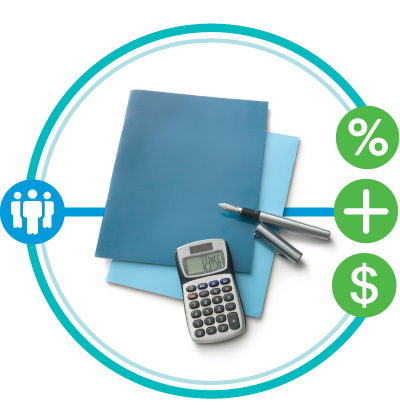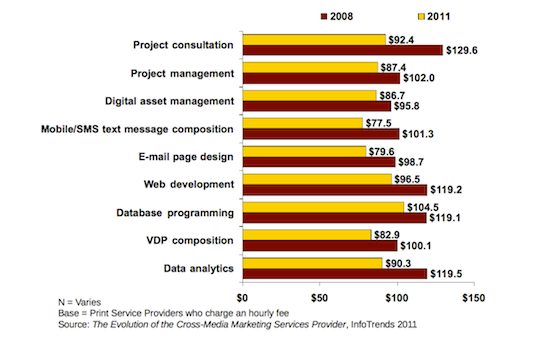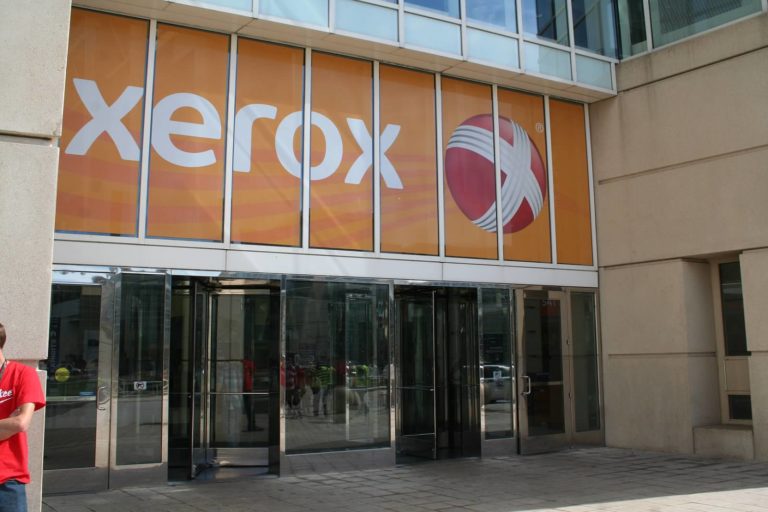
As I write this, I am preparing for a presentation on pricing strategies including the three main models:
- Cost-based
- Competitive-based, and
- Value-based pricing
All three strategies start with an understanding of cost manufacturing which is rooted in the budgeted hourly rate (BHR) calculation. In my opinion, few subjects in the industry are talked about more and acted upon less than cost estimates.
Most executives agree with the importance of accurate estimates but few take the actions required to insure accurate estimates. In working with more than a hundred companies, I estimate that less than a third of companies maintain updated BHR rates and time standards. In the NAPL Workflow Investment Study (2014), 82% of small companies had not invested in a Print MIS systems required for estimating.
The standard operating procedure within the printing industry is based on a cost plus model. Using the BHR analysis, you estimate your costs and then add a percentage of a mark-up. Those using the competitive pricing strategy will also consider the local selling price and increase or decrease the pricing based on competitive pricing.
The Role of Perceived Value
Value based strategy is a strategy based on perceived value. According to Investopedia, a consumer’s perceived value of a good or service affects the price that he or she is willing to pay for it.
The perceived value may be a new product (such as cross-media marketing) or overcoming an issue or pain point for the customer. An example of overcoming an issue could be an e-commerce ordering system (web to print) inside a company’s intranet that stores all the products they order and automatically bills the client based on contract rates. An examples of higher value services could be a greater return on investment by shifting from a static direct mail marketing strategy with the 2% return to a variable data printing strategy with the 7% return.
Of these two value-added strategies, introducing a new product is a more temporary solution because eventually that new service will become commoditized. In a WhatTheyThink article, Barb Pellow from InfoTrends showed how pricing for cross media marketing services fell from 2008 rates to 2011 rates, presumable as the service became more available and/or commoditized (see image above).
Your Customers Experience
But perhaps the strongest value-added strategy are those that enhance the customer’s experience. There is a great bookstore in Denver called the Tattered Cover. This privately owned bookstore was one of the pioneers in creating strategies to improve the customer experience.
While other bookstores scolded people for reading books in their stores, the Tattered Cover pioneered the practice of letting people read books in their stores, providing comfortable chairs, serving coffee and food, and creating more community involvement by hosting author signings and book discussion groups. Today all bookstores try to enhance the customer’s purchasing experience in these ways. The same is true at a national level in Starbucks stores. Like the Tattered Cover, they were pioneering coffee shops and paved the way for that strategy as well.

In the printing industry, we often talk to salespeople about trying to solve a customer’s problem–treat them like you would treat your best friend, knowing their product and objectives better than their bosses, identifying and helping overcome pain points, enhancing their buying experience or convenience–strategies that will help them better achieve their goal.
Admittedly this sounds nebulous but there are ways to measure your company’s perceived value by your customers. During my tenure with NAPL, we used a tool called the eKG. I was always fascinated in discussions I had with the inventor of the eKG, Dallas Dort, who would talk about how companies that improved their eKG score increased their sales and could increase their prices and profitability. After leaving NAPL, I created a tool based on the NPI or net promoter index strategy that also measured customers perceived value. After over a decade, I believe that focusing on and improving your customers perceived value of your service can be used to increase sales, pricing power and result in increased profitability.
—
Howie Fenton is the Vice President of Consulting Services for IMG. For 25 years, he has focused on benchmarking operational and financial performance for enterprise and commercial printers. For more info, e-mail hfenton@imgresults.com.




[…] thinking is pricing strategies which was discussed in a blog on this site last year entitled “Value Based Pricing: Fact or Fiction”. The issue is that the traditional cost-based pricing strategy does not take into account […]